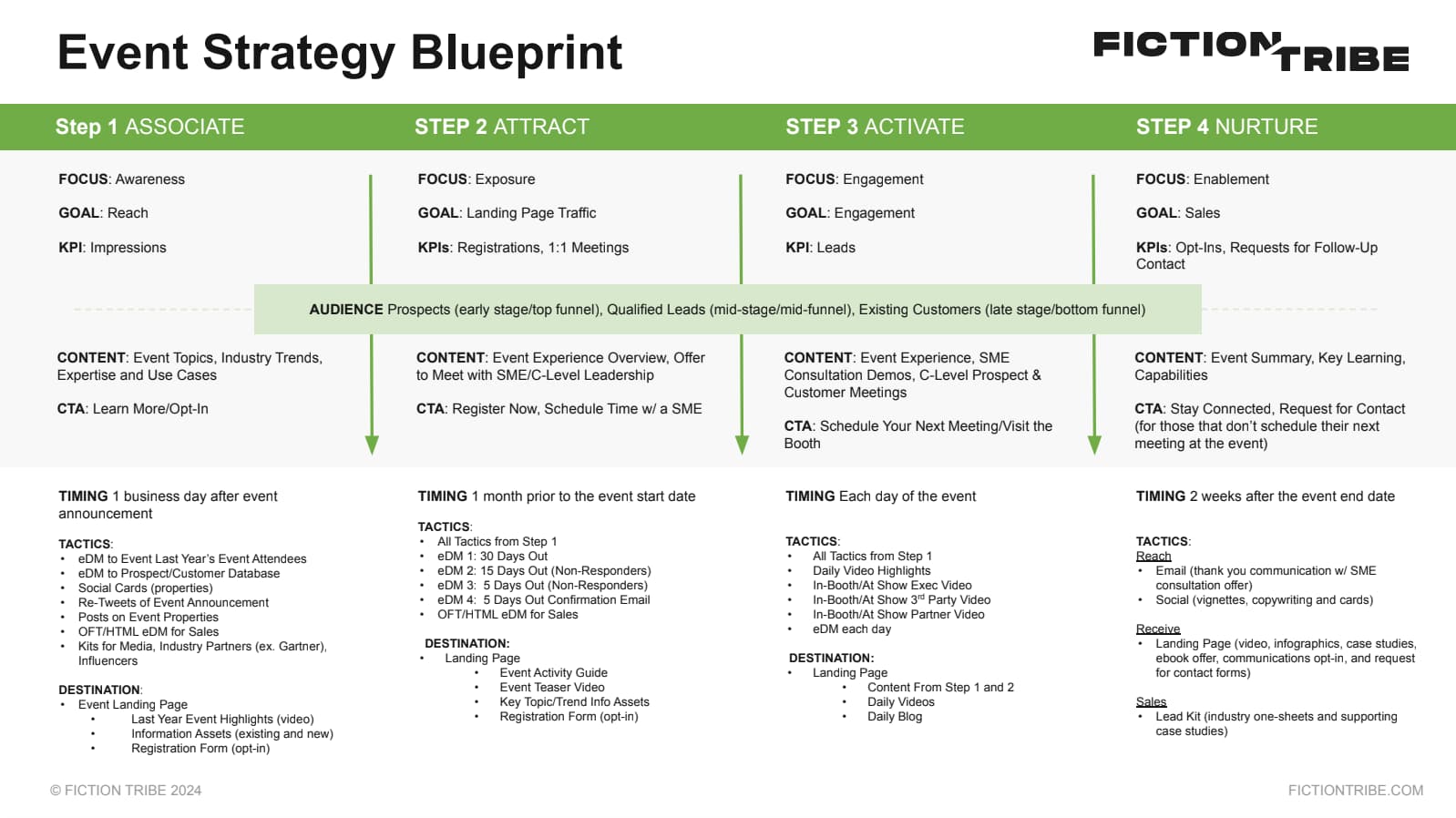It’s easy to be swept up by the hustle and bustle of B2B and enterprise event marketing, only to find yourself reconsidering its true value once you measure results. For years, we’ve seen businesses pour resources into event endeavors, often under accelerated timelines that employ quick-fix tactics in hopes of snagging attention.
Quite often, the returns are as questionable as the methods employed.
The fault, though, doesn’t lie with any single entity. It's the culmination of what’s been an ongoing investment in approaches that prioritize short-lived bursts of activity surrounding a set date. Anything leading up to or after an event? An afterthought.
An opportunity for more meaning.
Events are a way to extend engagement far beyond the confines of a convention center. They begin long before the doors open—and continue long after close. They bring a true opportunity to create an intentional, ongoing marketing communications plan that fosters awareness and forges meaningful connections with target audiences.
How to make the most of events? Check out our blueprint and process map.
Use them to educate, to inspire—to build a complete narrative that resonates with your audience, demonstrating exactly how your offers address their challenges, fulfill their needs, and empower them to achieve their most pressing objectives.
With these things in mind, here are some recommendations to guide your event marketing strategy:
1. Treat events as "always-on" opportunities for brand exposure.
Recognize events as a fruiting ground for continuous touchpoints. By maintaining a consistent presence—amplifying your message before events start, and continuing after they close—it’s possible to seize a relevant opportunity to increase awareness and reinforce your brand’s positioning in the minds of your target.
2. Stay in touch with valuable insights and points of view.
Use an event as a platform to share valuable insights, trends, and perspectives. Run-and-gun content only gets you so far, and it can put you in a reactive mindset (versus a proactive one). By consistently delivering intentional, high-quality content, establish credibility—and keep your audience engaged and informed.
3. Use real-world use cases to demonstrate expertise.
Gone are the days of generic sales pitches and empty promises. Instead, focus on demonstrating value beyond the product, helping targets understand not just the “what,” but the “how” and the “why.” Differentiating yourself from the competition by demonstrating the practical benefits of your solution also ladders up your expertise.
4. Dive deeper into your audience’s core needs.
Invest in relationships, not just leads. Digging into audience research, assessing your buyer’s journey, and realizing insights from past data makes it possible to truly nurture relationships. Guide prospects through the journey surrounding every event, and hyperfocus on how your offering addresses their needs. Then, you’ll truly elevate lead status from "general interest" to "high demand."
5. Maintain an ongoing dialogue and build a following.
Conversations don’t end when the event does. Keep up momentum by connecting with your audience year-round, whether that’s through email newsletters, social media content, or exclusive offers. When you deliver value throughout their journeys, there’s even more of a reason for customers to stay invested in your brand beyond the confines of the floor.
We’re saying goodbye to leading with flashy displays and fleeting interactions. Authenticity is in—real relationships are about building meaningful connections and seeing tangible results. By adopting a strategic, purpose-driven approach to event marketing, every interaction will leave a lasting impression, and you’ll have a plan of action for the future.
Interested in evolving your event marketing strategy with us? We’re here to help you take the next step, so please reach out.

